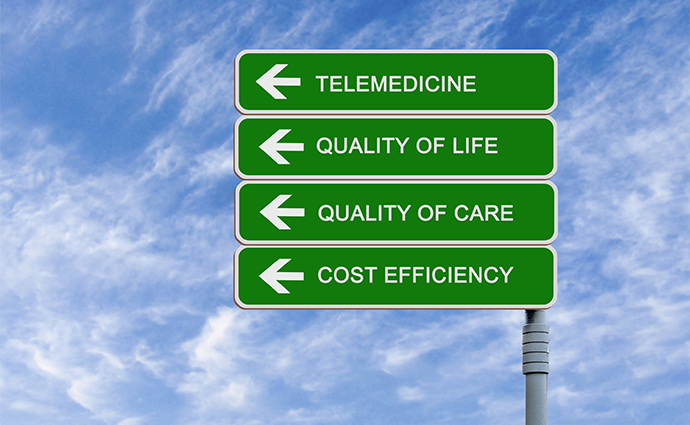CARES Act Expands Telehealth Coverage for Medicare, FQHCs and the VA
The Coronavirus relief bill passed by Congress and signed by President Trump last week expands Medicare coverage for telehealth, allows FQHCs and RHCs to qualify for coverage and boosts funding for broadband services.

Source: ThinkStock
- The $2 trillion Coronavirus relief package passed by Congress and signed by President Donald Trump last week includes several telehealth provisions, included more relaxed guidelines for Medicare coverage and new allowances for connected health at federally-qualified health centers (FQHCs), rural health clinics (RHCs) and hospices.
(For more coronavirus updates, visit our resource page, updated twice daily by Xtelligent Healthcare Media.)
The Coronavirus Aid, Relief, and Economic Security (CARES) Act (HR 748), the third bill aimed at tackling the COVID-19 pandemic, also reauthorizes the Health and Resource Service Administration’s Telehealth Resource Center grant programs at $29 million a year through 2025, boosts support for expanded broadband services, encourages the use of remote patient monitoring for home health services in Medicare, and funds new telehealth initiatives for the Indian Health Services and Department of Veterans Affairs.
The bill received support from a wide range of organizations, including the American Telemedicine Association. eHealth Initiative and the Center for Connected Health Policy.
“We believe the bill reflects the scale of challenges we face as a country and recognizes that expanding virtual care is necessary to defeat COVID-19,” ATA CEO Ann Mond Johnson said in a press release. “We commend Congress for recognizing the power of telehealth, and the bipartisan effort to lift telehealth barriers in the Medicare program while prioritizing federal funding for telehealth access and infrastructure during this emergency.”
“eHI supports the CARES Act and asks the Secretary to act swiftly in updating the Medicare telehealth waiver in order to ensure that technology is fully leveraged to combat COVID-19,” eHI CEO Jennifer Covich Bordenick said in a separate release. “While the legislation is another positive step forward in addressing the crisis, more needs to be done to support providers and patients during this difficult time. We look forward to continuing to work with Congress to ensure their voices are heard.”
As with past actions taken to combat the pandemic, most of the provisions are temporary, lasting for the duration of the emergency.
Regarding Medicare coverage, the new law relaxes the old requirement that coverage be restricted to real-time audio-visual technology, opening the door to coverage for phone-based services – and actions several states have taken with regard to Medicaid coverage to enable care providers to conduct initial assessments in a phone call.
The new law also relaxes the requirement that a care provider must have seen a patient in person within the past three years, and it gives the Health and Human Services Secretary more leeway to relax statutory restrictions on telehealth services covered by Medicare.
In a move hailed by telehealth advocates as a major step forward for rural care, the CARES Act now allows FHQCs and RHCs to be designated as a distant site for telehealth. Those two types of facilities have long served as care providers for rural and underserved populations, and many have been trying to use telemedicine and mHealth platforms despite the lack of Medicare coverage.
For the VA, the new law gives the agency $14.4 billion to expand telehealth services at VA facilities and another $2.15 billion to expand Coronavirus-related services, including the purchase of mHealth devices and broadband expansion. It also authorizes the agency to expand telemental health services, enter into short-term agreements with telecommunications companies to provide temporary broadband services to veterans, temporarily waives the in-person home visit requirement and telehealth and phone calls as an alternative, and ensures that telehealth is available for homeless veterans and case managers in the HUD-VASH program.
The Indian Health Service will be getting $1.032 billion through the bill to boost healthcare services, including mobile health units and increased capacity for telehealth; and the Federal Communications Commission will be getting $200 million to support telecommunications and other services aimed at boosting telehealth use. HRSA, meanwhile, will get $180 million for its telehealth programs.
The CARES Act also:
- Allows high-deductible health plans (HDHPs) with a health savings account (HSA) to cover telehealth services before the members reaches his or her deductible;
- Eliminates the requirement that nephrologists conduct some required periodic home visits for dialysis patients in person;
- Allows qualified providers to use telehealth to fulfill hospice recertification requirements for face-to-face visits;
- And provides $27 billion for HHS’ Public Health and Social Services Emergency Fund for Coronavirus measures, including telehealth access and infrastructure.
